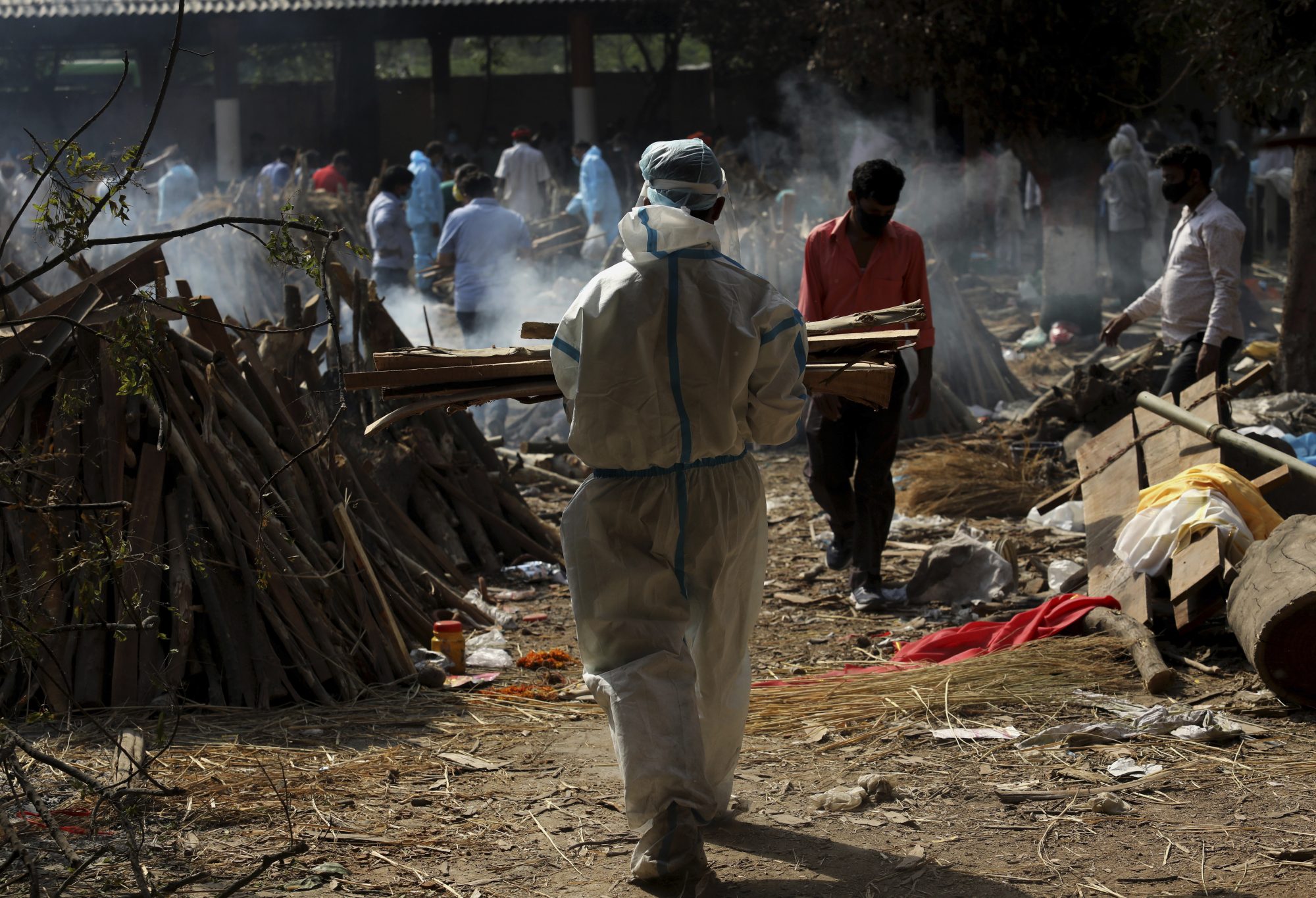The world is waking up to India’s plight—too late
Modeling suggests the true figure for new daily cases in India is likely to now number in the millions.

The news: Oxygen and other vital medical supplies have started arriving in India as it battles one of the most acute covid-19 crises any country has experienced yet. The country set a global record for new cases for the fifth day in a row yesterday, reporting 352,991 and 2,812 deaths. The true figure is almost certainly far higher. Modeling by researchers from the University of Washington’s Institute for Health Metrics and Evaluation suggests the true figure for new daily cases in India is likely to now number in the millions.
The outlook: The situation is dire. The health-care system in much of India has collapsed, with no intensive care unit beds available for new patients. Hospitals have run out of oxygen, meaning patients are suffocating. Parking lots have been turned into mass cremation sites.
Help on its way: Aid has started pouring into India from around the world. The World Health Organization promised to do “everything we can” after its director general, Tedros Adhanom Ghebreyesus, described the situation as “beyond heartbreaking.” The WHO said it was sending oxygen, laboratory supplies, and field hospitals to India, along with 2,600 experts to work alongside local health officials.
Oxygen: India’s external affairs ministry tweeted pictures of ventilators and oxygen concentrators that arrived from the UK today. Saudi Arabia and the United Arab Emirates are set to send similar supplies shortly.
Vaccines: The US has promised to send the raw materials to manufacture the AstraZeneca vaccine, plus ventilators, protective equipment, and test kits. It’s also pledged to send some of the 60 million unused doses of the AstraZeneca vaccine it has stockpiled, although only after a safety review (despite the fact the AstraZeneca vaccine has already been cleared by regulators in India).
What will the impact be? While the aid is helpful, scientists say it will only make a “dent” in the crisis India is experiencing. The situation may be worsened by the emergence of a new virus variant, B.1.617, which has some similarities to two other more transmissible variants of the virus that have surfaced in South Africa and California. But experts say there were other contributing factors: the government relaxed restrictions too quickly and prioritized vaccine exports. Even now, India has still not gone back into a national lockdown.
Deep Dive
Policy
Is there anything more fascinating than a hidden world?
Some hidden worlds--whether in space, deep in the ocean, or in the form of waves or microbes--remain stubbornly unseen. Here's how technology is being used to reveal them.
A brief, weird history of brainwashing
L. Ron Hubbard, Operation Midnight Climax, and stochastic terrorism—the race for mind control changed America forever.
What Luddites can teach us about resisting an automated future
Opposing technology isn’t antithetical to progress.
Africa’s push to regulate AI starts now
AI is expanding across the continent and new policies are taking shape. But poor digital infrastructure and regulatory bottlenecks could slow adoption.
Stay connected
Get the latest updates from
MIT Technology Review
Discover special offers, top stories, upcoming events, and more.